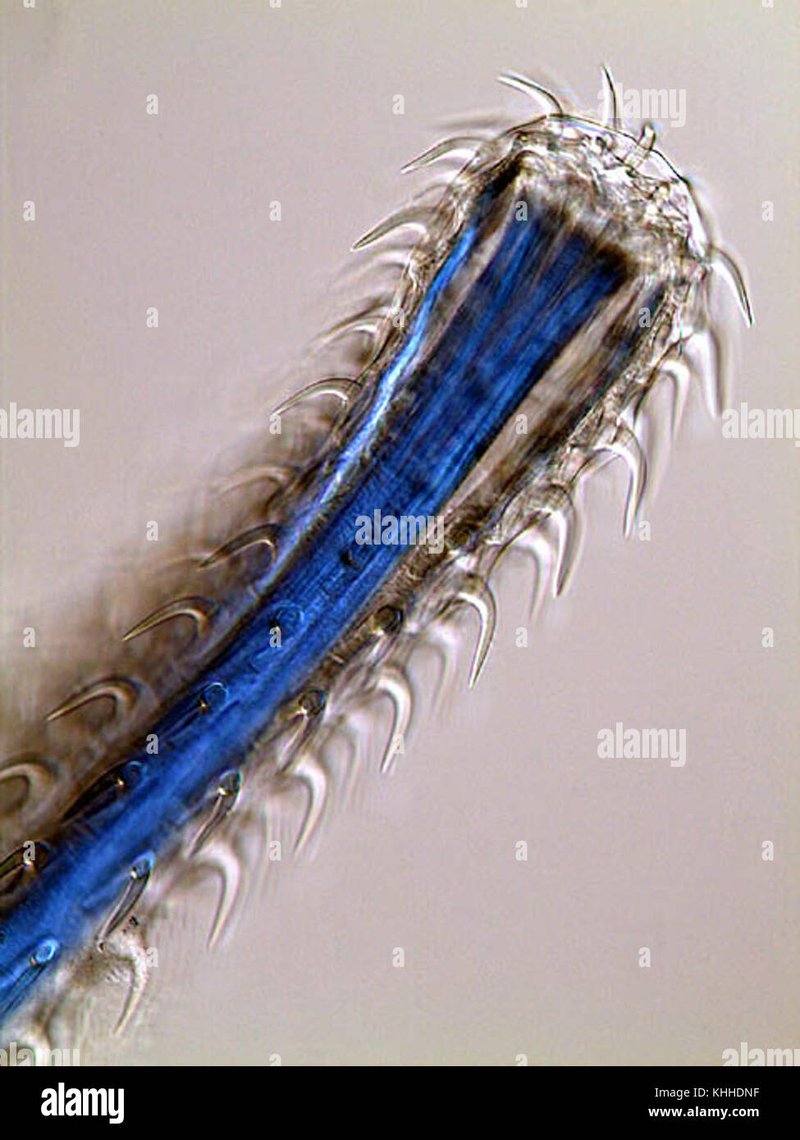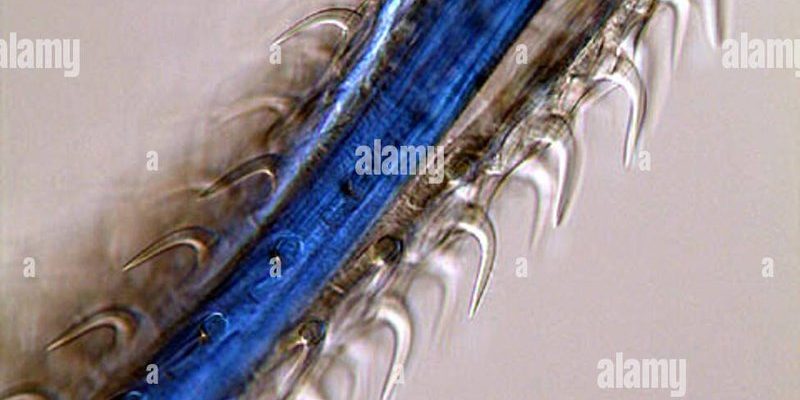
Acanthocephala live as parasites within the intestines of various vertebrates, thriving on nutrients while their hosts go about their day. These worms might not be at the forefront of our minds, but the seasonal rhythms they follow can tell us a lot about their life cycle and the environments they inhabit. Their behaviors shift with the seasons, influenced by factors like temperature, host availability, and changing ecological dynamics. Let me walk you through the seasonal behavior patterns of these fascinating creatures, using insights from field studies to illustrate their unique adaptations.
Understanding Acanthocephala: An Overview
To grasp the seasonal behavior patterns of Acanthocephala, it’s essential to start with a quick overview of what they are. These parasitic worms belong to a group of animals characterized by their distinctive thorny spines on their heads, which they use to anchor themselves in the intestines of hosts. The life cycle of Acanthocephala typically involves multiple hosts, including arthropod intermediates and vertebrate definitive hosts, such as fish, birds, and mammals.
These worms are fascinating because they inhabit different environments, from freshwater streams to marine ecosystems. As they navigate this complex life cycle, their behavior shifts significantly with the changing seasons. This adaptation is crucial for survival, as it impacts their reproduction, feeding habits, and even the dynamics of their host organisms.
Given their reliance on host availability, Acanthocephala’s behavior can often mirror the seasonal patterns of their hosts. For example, if a certain fish species becomes less active in winter, the worms may also reduce their activity level, conserving energy until conditions improve. This synchronization with host behavior is a remarkable example of adaptation in a parasitic lifestyle.
Spring: Awakening and Reproduction
Spring marks a time of renewal not just for plants and animals, but also for Acanthocephala. As temperatures rise and hosts become more active, these worms spring into action as well. During this season, they often enhance their reproductive activities, taking advantage of the increased food availability and host interactions.
The increase in temperature stimulates the growth and metabolic rates of both Acanthocephala and their hosts. For instance, as fish become more active in searching for food, the added movement can lead to higher rates of infection for Acanthocephala as they spread within the host population. Additionally, spring rains can lead to changes in aquatic habitats, impacting where these worms can find suitable hosts.
Interestingly, some studies suggest that Acanthocephala may alter their reproductive strategies based on host availability during this period. In abundant conditions, they might produce more eggs, while in limited scenarios, they could hold back on reproduction until conditions improve. Here’s the thing: this flexibility gives them a distinct advantage in adjusting to environmental changes.
Summer: Feeding Frenzy and Host Interaction
Summer is a critical season for Acanthocephala as both their hosts and the parasites themselves hit their peak activity levels. Warmer water temperatures often lead to a feeding frenzy for fish and other hosts, which in turn creates more opportunities for Acanthocephala to thrive.
During this time, the worms can be found in greater numbers within their definitive hosts, thanks to the abundant food supply. You might be wondering how they manage to stay so well-fed: the answer lies in their unique adaptations. Acanthocephala can absorb nutrients directly from the host’s digestive system, which allows them to grow and reproduce effectively while avoiding direct competition for food resources.
Moreover, summer introduces a host of ecological interactions. Acanthocephala might also influence the behavior of their hosts, making them more susceptible to predation, which could help in the transmission of the worms to new hosts. This intricate dance between the parasite and its host showcases the complexities of ecological relationships and the impact of seasonal changes.
Autumn: Lifecycle and Preparation for Dormancy
As summer fades and autumn arrives, Acanthocephala begin to shift their focus towards preparing for the coming cooler months. This time of year is often marked by changes in host behavior and availability. As temperatures start to drop, many fish and birds begin to migrate or reduce their feeding, impacting the Acanthocephala’s lifecycle.
During the autumn, these worms often focus on maximizing reproduction before the harsh winter months. With decreasing host activity, Acanthocephala might produce a staggering number of eggs, ensuring that enough larvae are present when conditions improve in spring. It’s somewhat similar to how some animals stockpile food for winter; by creating a reserve of eggs, the worms ensure their survival through the cold months.
Additionally, research has shown that environmental conditions during autumn can affect the survival rates of Acanthocephala eggs. Cooler temperatures might influence where these eggs can hatch successfully, prompting the worms to adapt their breeding strategies accordingly. Understanding these behaviors allows researchers to predict patterns of infection rates in host populations more accurately.
Winter: Survival and Dormancy
Winter presents a challenging time for Acanthocephala. Cold temperatures and reduced host activity can severely limit their feeding and reproductive opportunities. However, these survivalists have their tricks. Some Acanthocephala enter a state of dormancy, allowing them to conserve energy while waiting for more favorable conditions.
In many cases, the eggs are the key to the survival of the species during these colder months. Acanthocephala can lay eggs that remain dormant until conditions are right for hatching. This ability to withstand harsh environmental conditions is a testament to their adaptability.
Interestingly, not all Acanthocephala species behave the same way in winter. Some might find ways to stay within their hosts longer, utilizing any available nutrients for sustenance. Others could use strategies to navigate through the cold water environments, improving their chances of finding new hosts once spring arrives.
Field Studies: Insights on Seasonal Behavior Patterns
Field studies have significantly enhanced our understanding of how Acanthocephala behave throughout the seasons. Researchers have tracked these worms in various ecosystems, gathering valuable data on factors such as temperature, host population dynamics, and environmental stressors. They often use techniques like PCR (Polymerase Chain Reaction) to identify Acanthocephala in hosts, providing insights into infection patterns.
One fascinating finding from these studies is that the timing of host availability can greatly affect the success rates of Acanthocephala. For example, if a host fish species has an earlier spawning season, it could create a spike in Acanthocephala infections. This suggests that the worms are highly responsive to changes in their environment, adjusting their life cycles accordingly.
Field experiments have also helped in understanding the ecological impacts of Acanthocephala on fish populations. In some cases, high infection rates can lead to changes in host behavior, which can influence predator-prey interactions within the ecosystem. This interconnectedness illustrates how the seasonal behavior patterns of a small parasite can have large-scale effects on ecological balance.
As we’ve explored, the seasonal behavior patterns of Acanthocephala offer a window into the intricate world of ecological interactions. From their reproductive strategies in spring to their dormancy in winter, these parasites exhibit remarkable adaptations that enable them to thrive in a variety of conditions.
Understanding Acanthocephala’s behaviors is not just about studying worms; it’s about recognizing the complex web of life they’re a part of. Their existence can reveal critical insights about the health and dynamics of ecosystems. So the next time you think about seasonal changes in nature, remember: even the smallest creatures can play significant roles in the grand scheme of things.

